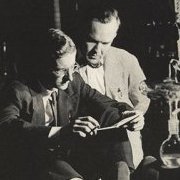-
Posts
4586 -
Joined
-
Last visited
-
Days Won
12
Content Type
Profiles
Forums
Events
Everything posted by hypervalent_iodine
-

Solid state peptide synthesis
hypervalent_iodine replied to Sciencegeeknm's topic in Organic Chemistry
It's no longer an ester oxygen, it's a carboxylate, which is basic. The ammonium nitrogen is acidic, so abstraction of a proton / hydrogen from it by the carboxylate is just an acid base reaction. The reaction generally either done at ambient temperature, or where the addition of the amine is performed drop wise to a solution of the Boc, and then allowed to warm to room temp. -
Sensei, as I have mentioned to you before (numerous times as a result of your posts across numerous threads), you have a habit of posting answers in chemistry threads that are either completely wrong, off topic, or so convoluted as to be completely useless. As has been outlined by John Cuthber, your posts here are an example of this, and pointing that out is not nitpicking. I would suggest we return to the OP before this gets too out of hand, however it is a bit vague, and they don't seem to have returned since their initial post. Perhaps it is best left here, and any further questions regarding the specific exchange directly prior to this be moved to a new thread if further discussion is desired.
-
1. No. Ar... 2. Yes. Refer to post11.
-
1. Yes, but both benzene and napthalene have a particular quality in common. It starts with an a. 2. And?
-
Well no, they share particular commonalities. For instance, what would you say about the middle portion of the molecules? What kind of functional groups are on the right? Do they share anything in common? As an example that might help you, if I had an ester, an amide, and an acid anhydride, I would say that they share the property of being carboxylic acid derivatives. If two of those functional groups were substituted onto a ring spaced only by a methyl substituted carbon, I would also say that those two molecules have that in common. You can state some very broad similarities between all three molecules like this, but there are also many more specific ones when you only consider two. The question hasn't asked you to state the commonalities between all three exclusively, so you could state both.
-
I see quite a few. For example, are the substitution patterns the same? What are the substituents? What are they substituted on?
-

Solid state peptide synthesis
hypervalent_iodine replied to Sciencegeeknm's topic in Organic Chemistry
No problems. Just to elaborate a little, the DCC (as with any activating agent) is used to derivatise the carboxylic acid (as an ester, anhydride, uronium, etc.), thereby making the carbonyl carbon more electrophilic and susceptible to nucleophilic attack by the unprotected amine on the terminal end of the growing chain. When binding the first amino acid to the resin, you need the amine to be at the terminal end for deprotection and then addition of the second amino acid, and for the nucleophilic oxygen to be the reactive centre on the carboxyl group. It makes no sense to hide the latter by way of an activating group, because then it can't react. -
By heteroatoms I mean non carbon/hydrogens. So yes, the nitrogen is included there. The only reason I butted in is because it is better to avoid the misconceptions due to oversimplification at the beginning than it is to rectify someone's thinking later. I don't think hybridisation is that difficult to understand properly provided the right base knowledge is there, hence why I would like to hear from the OP about what they know.
-
Your definition of sp3 hybridisation might / is be a bit misleading if or when the OP comes to consider things like allenes or heteroatoms, and doesn't exactly explain the concept. I'd be interested to hear what the OP thinks about hybridisation.
-
Well, what do you know about identifying the type of hybridisation?
-
! Moderator Note Abiogensis =/= evolution. Please stick to the topic. Seriously disabled, if you wish to discuss abiogensis further, you are welcome to open your own thread.
-

Solid state peptide synthesis
hypervalent_iodine replied to Sciencegeeknm's topic in Organic Chemistry
The DCC isn't required in the second rection, because it isn't making a peptide bond. It's just being bound to the resin bead. Carboxylates tend not to be great nucleophiles, but under certain conditions you can convince them to undergo substitution. In this case it's SN1, because the chloro is benzylic. -

Solid state peptide synthesis
hypervalent_iodine replied to Sciencegeeknm's topic in Organic Chemistry
Your picture isn't attached -

The question is for experts only.
hypervalent_iodine replied to The Almighty's topic in Organic Chemistry
B. No. It's part of it. Refer to my initial post. -

The question is for experts only.
hypervalent_iodine replied to The Almighty's topic in Organic Chemistry
1 a.) I meant in terms of reaction type. What sort of reaction are you hoping to predict? B. Yes. -

The question is for experts only.
hypervalent_iodine replied to The Almighty's topic in Organic Chemistry
1. a) Could you be more specific? b) It depends. I usually start by identifying the class of reagent, the reactive points of the molecule and go from there. For many simple reactions it's often just a case of identifying the nucleophile and the electrophile. You do need to have some skill in electron pushing and a good sense of what is chemically allowed for this to work for more complicated reactions, but that comes with experience. B. I don't know what you mean by structural configuration. In general though, electronic configuration will get you only a small part of the picture. C. There are many things you have to have a good understanding of. Get an organic text book (McMurry and Clayden are my favourites) and get a feel for it yourself. The mastery side of it come with extensive practise. -

Reduction of Potassium Hydroxide
hypervalent_iodine replied to TheNextTesla's topic in Applied Chemistry
Well yeah, given that your solvent is probably water. And both those compounds are highly hygroscopic, so they will get wet super quickly. Certainly enough to ruin your electrolysis. If you don't know this already, you probably shouldn't be doing it. -

Reduction of Potassium Hydroxide
hypervalent_iodine replied to TheNextTesla's topic in Applied Chemistry
I thought your area was heavily ventilated? What sort of vessel are you using? How are you going to dry the KOH or KCl? -

Confused on how to calculate my salary
hypervalent_iodine replied to Elite Engineer's topic in The Lounge
I would assume you're second calculation would be the correct one given that there is rarely exactly 4 weeks in a month. Edit: that's how it would be calculated here, anyway. Your annual salary is divided by pay frequency. In Australia and NZ it is rare for anyone to be paid on a monthly basis, and things like rent are expected weekly or more commonly, fortnightly. -

Reduction of Potassium Hydroxide
hypervalent_iodine replied to TheNextTesla's topic in Applied Chemistry
May I ask how you have prepared for potassium fires? If you are doing this in atmosphere, there is practically a 100% chance of you having one. That is assuming your electrolysis is successful, which is dubious. It won't work if there is water present. -
Which is still wrong.
-
I don't think the answer given is correct. Ppm is parts per million. From a percentage concentration, calculating ppm is just a matter of multiplying by 10000 (since % is parts per hundred). Given that, and assuming you've provided the correct number as per the question, I get 7ppm. Can you check that the question states 0.0007% and not 0.00007%? This is correct, but the OP doesn't give 0.00007% as the value.
-
Could you share your thoughts on the questions?
-

Reduction of Potassium Hydroxide
hypervalent_iodine replied to TheNextTesla's topic in Applied Chemistry
Since no one has really mentioned this, I would encourage you not to attempt this unless you have appropriate safety controls in place. Chlorine gas is no joke, and potassium metal is highly pyrophoric. You are setting yourself up for an especially deadly accident if you aren't taking the correct measures.

